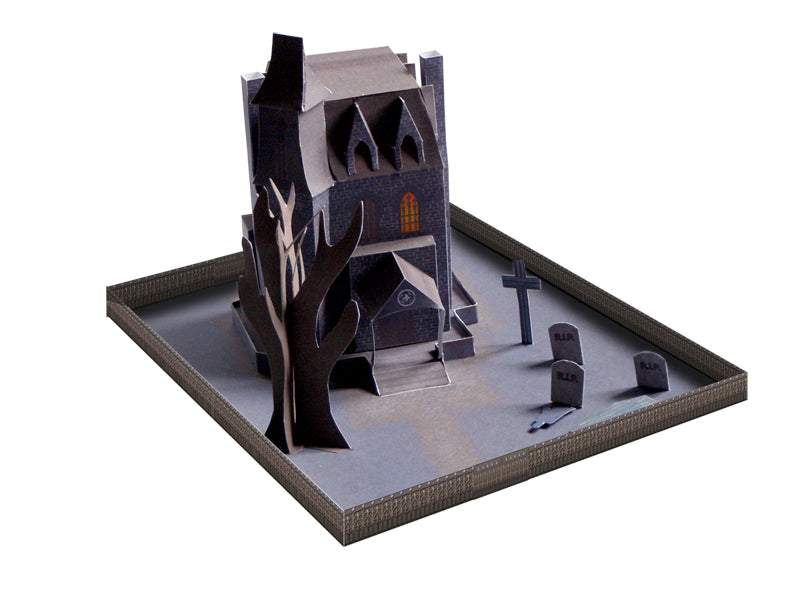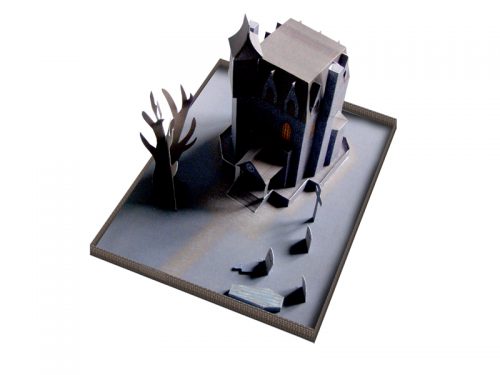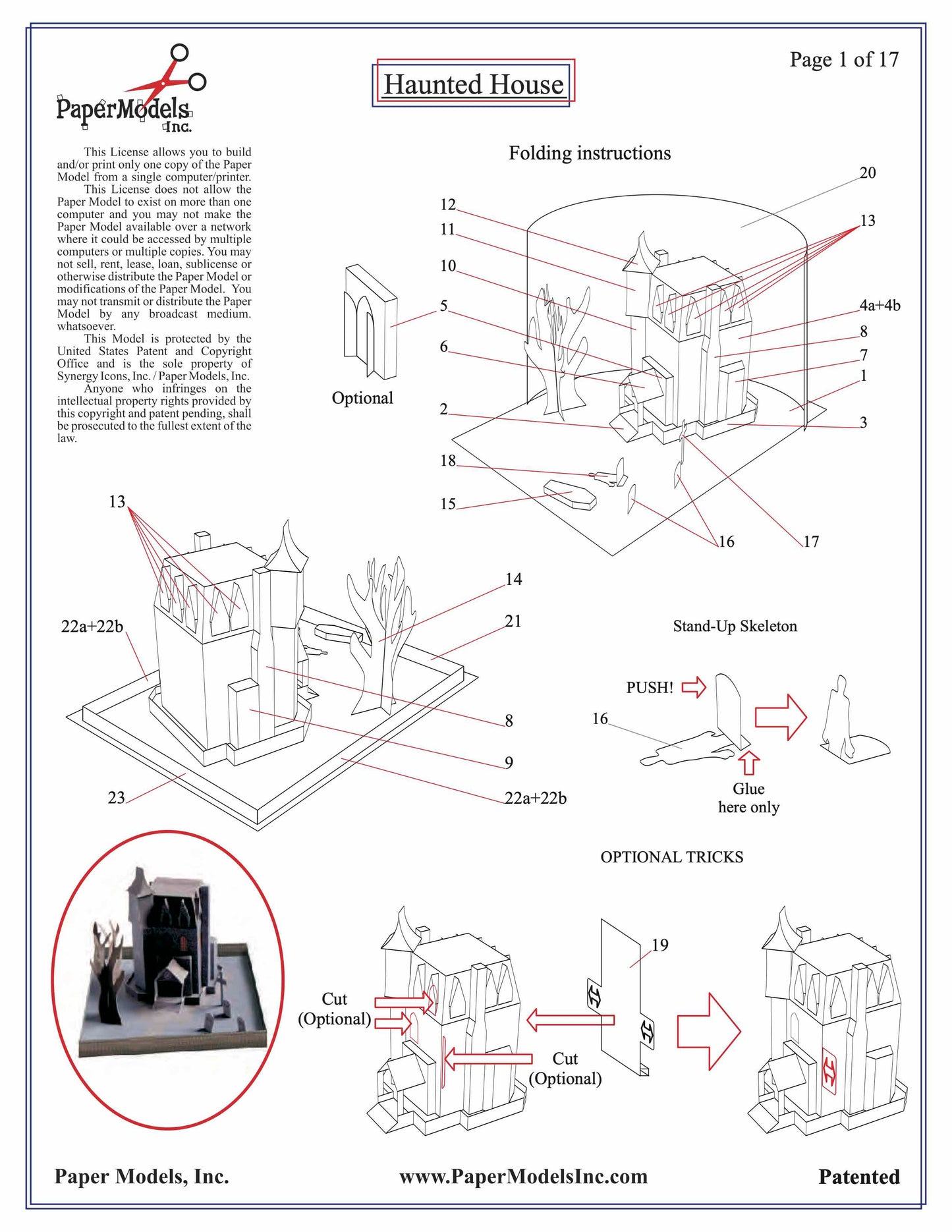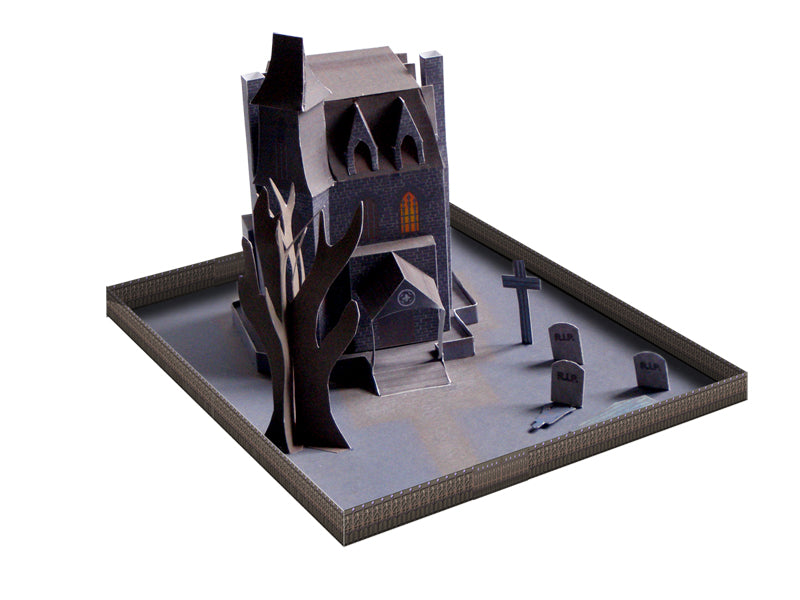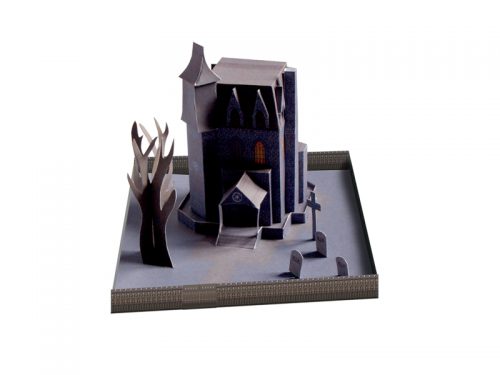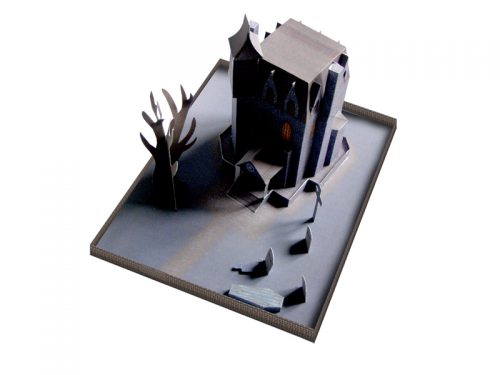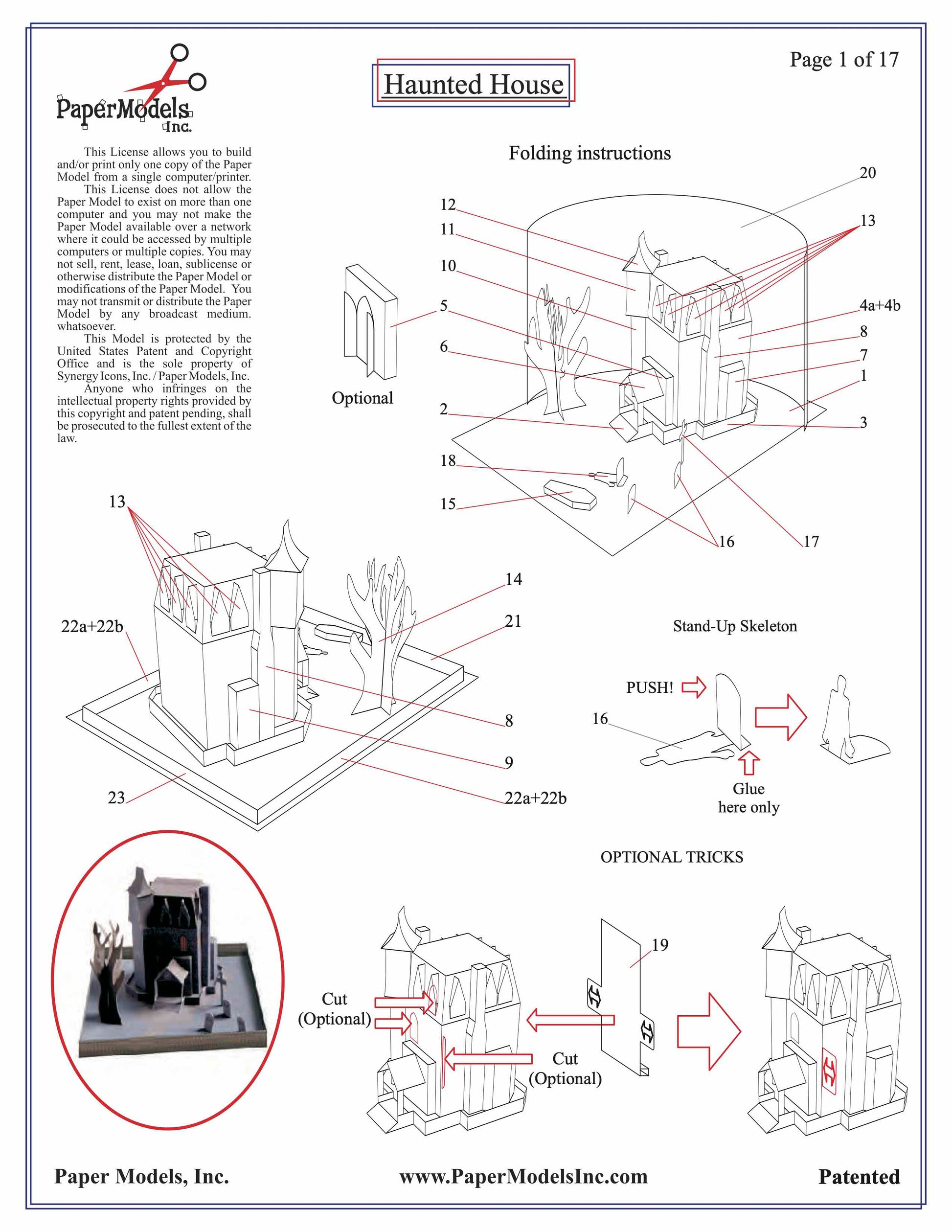Halloween Haunted House - Paper Model Project Kit
Halloween Haunted House - Paper Model Project Kit
No se pudo cargar la disponibilidad de retiro
🌟 Welcome to Paper Models Online – Your Shortcut to Academic Excellence! 🌟
Are you tired of stressing over last-minute school projects? Look no further! Paper Models Online is here to make your academic life a breeze.
🚀 Why Choose Us?
At Paper Models Online, we understand the pressure of looming deadlines and the desire for that coveted "A" grade. That's why we've crafted the perfect solution for you! Whether you're a student aiming for extra credit, a parent looking for quality time with your kids, or just someone in need of a break from the chaos, our paper models are your ticket to success!
💻 Instant PDF Download OR Pre-Printed & Shipped
You're in control! Choose from our instant PDF download, starting at just $9.95 for the 7"x10" size or $11.95 for the 10"x13" size.
Print it on your home or office printer using regular paper, or opt for the hassle-free pre-printed option. We'll ship it directly to your doorstep for a flat $5 fee via USPS First-Class Parcel, ensuring you get it in 1-3 days!
✂️ Easy Assembly, Maximum Impact
With just a pair of scissors, some glue, and an hour of your time, you can turn these paper sheets into stunning three-dimensional architectural replicas or complete science projects. The images on our website are real models made from our kits, and we even provide a history to help you craft an impressive report.
🎨 Unleash Your Creativity
Not into mission kits? No worries! Our models double as templates for your creative genius. Paint, trace, adjust sizes—your imagination is the only limit! Create a custom masterpiece that reflects your unique style and personality.
🛒 The Buying Process Made Simple
- Choose Your Size: 7"x10" or 10"x13"
- Choose Your Delivery: Instant PDF download or pre-printed and shipped
- Purchase Your Model: It's that easy!

📦 Typical Kit Sample
Each kit includes 8 to 18 pages, providing everything you need to bring the model to life. An "exploded view" guides you through assembly, and a complimentary history adds that extra touch for your report. Impress your teacher not just with creativity but also with your research skills!
Don't let deadlines stress you out. Choose Paper Models Online for your next school project, and let us be Your Best Way To Get An "A"! 🌟
 |
 |
 |
| Exploded View | Sample Pieces | Finished Model |
Free History For Your Report
HALLOWEEN
Halloween is a holiday with both religious and pagan roots, and is celebrated in most parts of the Western World on October 31st of each year. Before spreading to Europe, many scholars believe that Halloween originally derived from pagan Gaelic culture in Ireland. The earliest recorded versions of this were known as the festival of Samhain, a time when the Irish celebrated the conclusion of the harvest season. During this time, they would prepare for the winter by taking a count of how much dry goods supplies they had available, and they would also slaughter livestock for storage and use during the winter. The festival of Samhain would often include large bonfires where the bones of the animals were thrown in. The belief in Samhain also included the idea that October 31st was the day when the line between the dead and undead world was blurred, allowing spirits to enter into the living world and be a danger to humans. The modern Halloween custom of wearing mask and costumes started here -- it was an attempt by the Irish to make fun of the spirits that came into the living world.
This pagan holiday, particularly of feasting and wearing costumes, eventually spread to most of Europe, where the name became Hallowe’en or All-Hollow-Even, and spread in its popularity. Later, the Roman Catholic Church gained in prominence and authority in Europe, and began the task of converting old, pagan holidays to Christian holidays. The Church believed that many Europeans would not convert to Christianity if they had to give up their holidays of feasting -- so new, Church-structured holidays were created to replace the pagan holidays and encourage converts. The new Church holiday became All Saint’s Day, and landed on November 1st.
Many Irish and European converts, however, still chose to celebrate both All-Hollow-Even and All Saint’s Day at the same time, still on October 31st. As European and Irish immigration spread into America, the customs and tradition of the old pagan holiday came with them, and the traditions celebrated today still find most of their origins in All- Hollow-Even rather than All Saint’s Day. The modern tradition of handing out candy did not begin until the last 150 years in North America, and seems to have begun on its own, not as part of ritual holiday traditions. The “trick-or-treating” practice is considered rude, or an annoyance in Europe and Ireland, due to its similarity to begging, or “souling,” -- a practice in pagan Ireland and Scotland considered to be an off-color custom. “Trick or treating” is most popular in the United States and Canada -- younger children asking for treats, and older children well into their college years performing a variety of pranks (egging houses, wrapping homes in toilet paper, and causing general mischief). In Europe and Ireland, many teenagers find the “tricking” part of Halloween appealing. Some of the only non-Western countries to celebrate either Halloween or modern “trick-or-treating” are the Middle Eastern countries of Israel (which has adopted many Western customs, with its residents being mostly European descendents) and Lebanon, which celebrates a similar holiday on December 4th.
As far as decorations, most early Halloween symbols were merely the jack-o-lantern (a carved vegetable with a light inside) and the scarecrow, as these were associated with the harvest season of Ireland. The origin of carving a vegetable was based off of Irish folklore about a hard-drinking old farmer named Jack, who tricked the devil by trapping him in a tree and then carving a cross on the tree so the devil could not come down. A curse placed on old farmer Jack meant that he had to wander the earth at night for all eternity. To symbolize this, vegetables were carved to resemble a face and a light was placed inside. Pumpkins were not used for this originally, until the arrival of the holiday in America, as pumpkins were not readily available in Ireland. While the idea of spirits, skeletons, and witches as costumes was prevalent in pagan Ireland and Europe, other Halloween decorations and associations -- essentially the Grim Reaper, black cats, vampires, and bats did not appear until the 20th century in America, and were essentially used by marketers who attempted to tie the holiday to more macabre ideas. The visions of Halloween that are associated with eerie atmospheres, the threat of death, and supernatural happenings has mostly been a creation of filmmakers in America and Britain.
© Copyright – Paper Models, Inc. – All Rights Reserved
els, Inc.
Share
